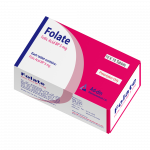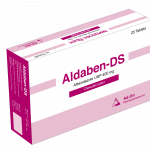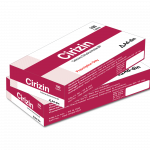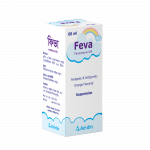Composition
Each film-coated tablet contains Azithromycin Dihydrate USP 524.03 mg equivalent to Azithromycin 500 mg.
Pharmacology
Azithromycin (Vinzam) is a potent member of azalides, a subclass of macrolides. Azithromycin is active against both Gram-positive and Gram-negative organisms and against mycoplasma and chlamydia. Azithromycin Vinzam binds to the 50s ribosomal subunit of bacteria and inhibits protein synthesis by blocking the translation process. Azithromycin (Vinzam) is rapidly absorbed from the small intestine with peak plasma concentrations (Cmax) of 0.4 mg/L being attained 2-3 hours after a single 500 mg oral dose. Absorption is reduced by approximately 50% in the presence of food in the stomach and peak serum levels, but not the total extent of absorption is reduced by the presence of antacids containing aluminum or magnesium.
The concentration of Azithromycin in most tissues generally exceeds that in the serum by 10 to 100 fold. Azithromycin is widely distributed throughout the body. High concentrations are found in the prostate, pulmonary tissue, tonsillar tissue, gastric mucosa, liver, and gynecological tissue, even 4-5 days after a single dose. These sustained tissue concentrations are significantly above the MIC90 values for most common pathogens. However, concentrations in the brain are low, even after multiple doses. Most of the dose of Azithromycin remains unmetabolized. The main route of elimination is biliary excretion. There is some metabolism in the liver, the metabolites being excreted in the bile. A small amount of the drug is excreted unchanged in the urine.
Indications
Respiratory tract infections, otitis media, skin and soft tissue infections, diarrhea, cholera, typhoid fever, uncomplicated genital chlamydial infections and non-gonococcal urethritis, gonorrhea.
Dosage & Administration
500 mg once daily orally for 3 days or 500 mg once on day 1, then 250 mg once on days 2-5 for 4 days. For sexually transmitted diseases caused by Chlamydia trachomatis in adults, the dose is 1 gm given as a single dose or 500 mg once on day 1, followed by 250 mg once daily for the next 2 days may also be given.
The reconstituted suspension should be used within 7 days.
Contraindications
Hypersensitivity to the drug or any of the macrolide antibiotics. Co-administration with ergot derivatives should be avoided.
Warning & Precautions
As with any antibiotic, observation for signs of superinfection with non-susceptible organisms, including fungi, is recommended. No dose adjustment is needed in patients with renal impairment.
Side Effects
Gastrointestinal side effects such as nausea, vomiting, diarrhea, flatulence, loose stool, and minor abdominal cramps may occur.
Use in Pregnancy & Lactation
The pregnancy Category of Azithromycin (Vinzam) is B. Animal reproduction studies have demonstrated that Azithromycin has no evidence of harm to the fetus. There are no adequate and well-controlled studies in pregnant women. Since animal reproduction studies are not always predictive of human response, Azithromycin should be used during pregnancy only if adequate alternatives are not available. It is not known whether Azithromycin is secreted in breast milk. However, caution should be exercised when Azithromycin is administered to nursing women.
Drug Interactions
Absorption of Azithromycin is reduced by 50% in the presence of food in the stomach. It also interacts with antacids, and ergot derivatives- digoxin and cyclosporine, warfarin, theophylline, carbamazepine, methylprednisolone, and cimetidine.
Overdosage
There are no data available on overdosage with azithromycin. Typical symptoms of overdosage with macrolide antibiotics include hearing loss, severe nausea, vomiting, and diarrhea. Gastric lavage and general supportive measures are indicated.
Storage
Store below 30°C, protect from light & moisture. Keep out of the reach of children.
Packing
Each box contains 12 tablets in Alu-Alu blister pack.






